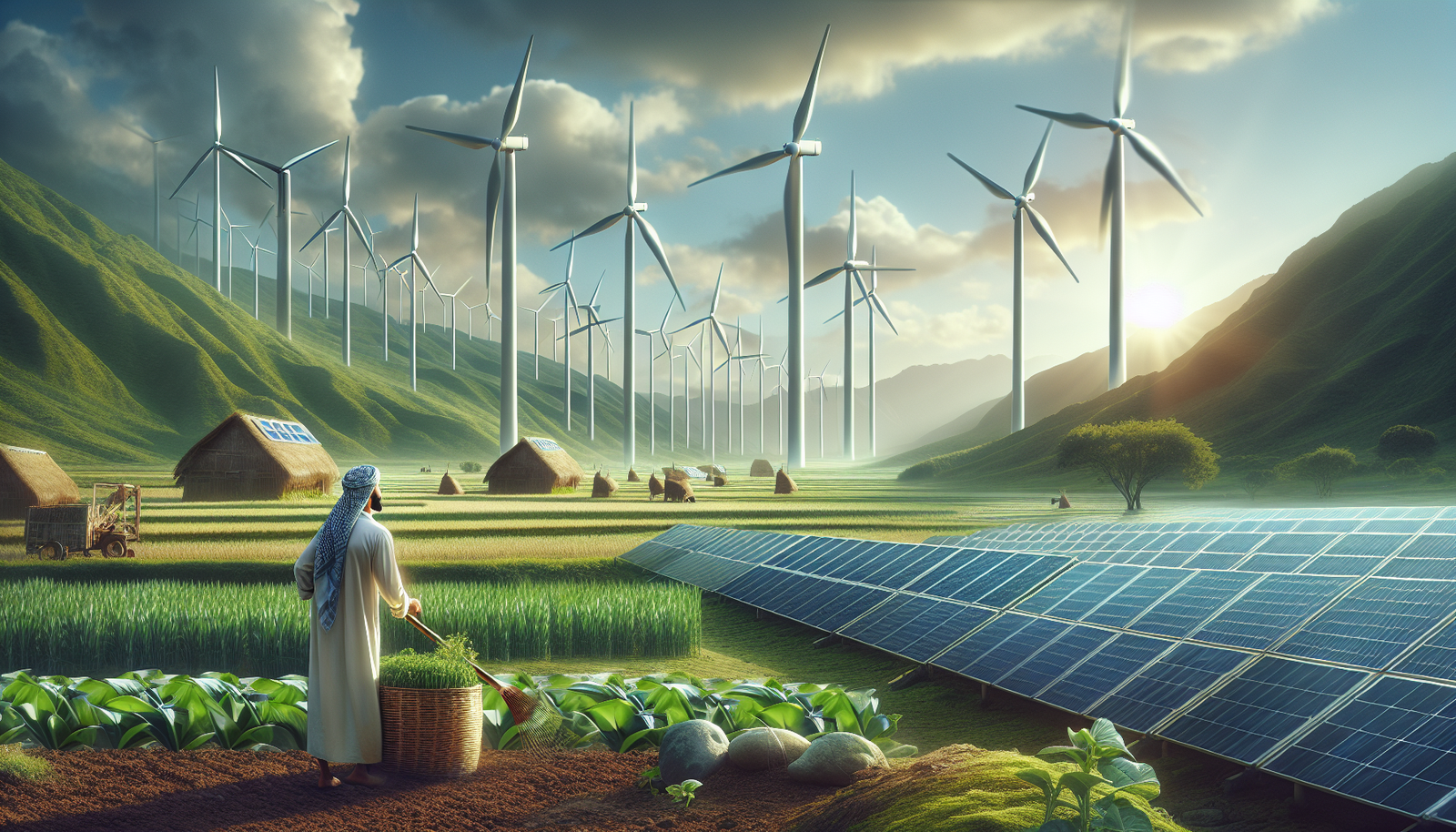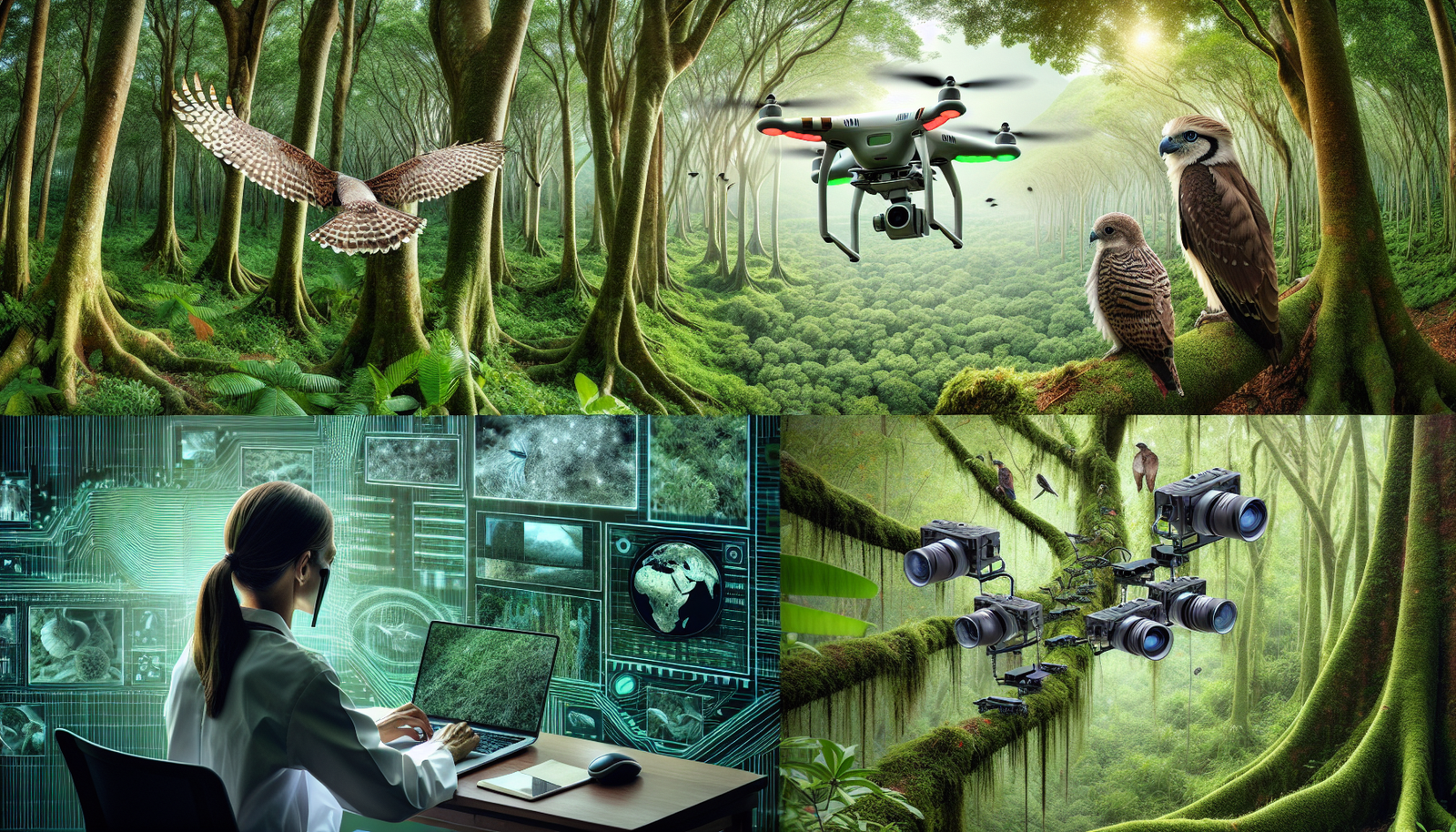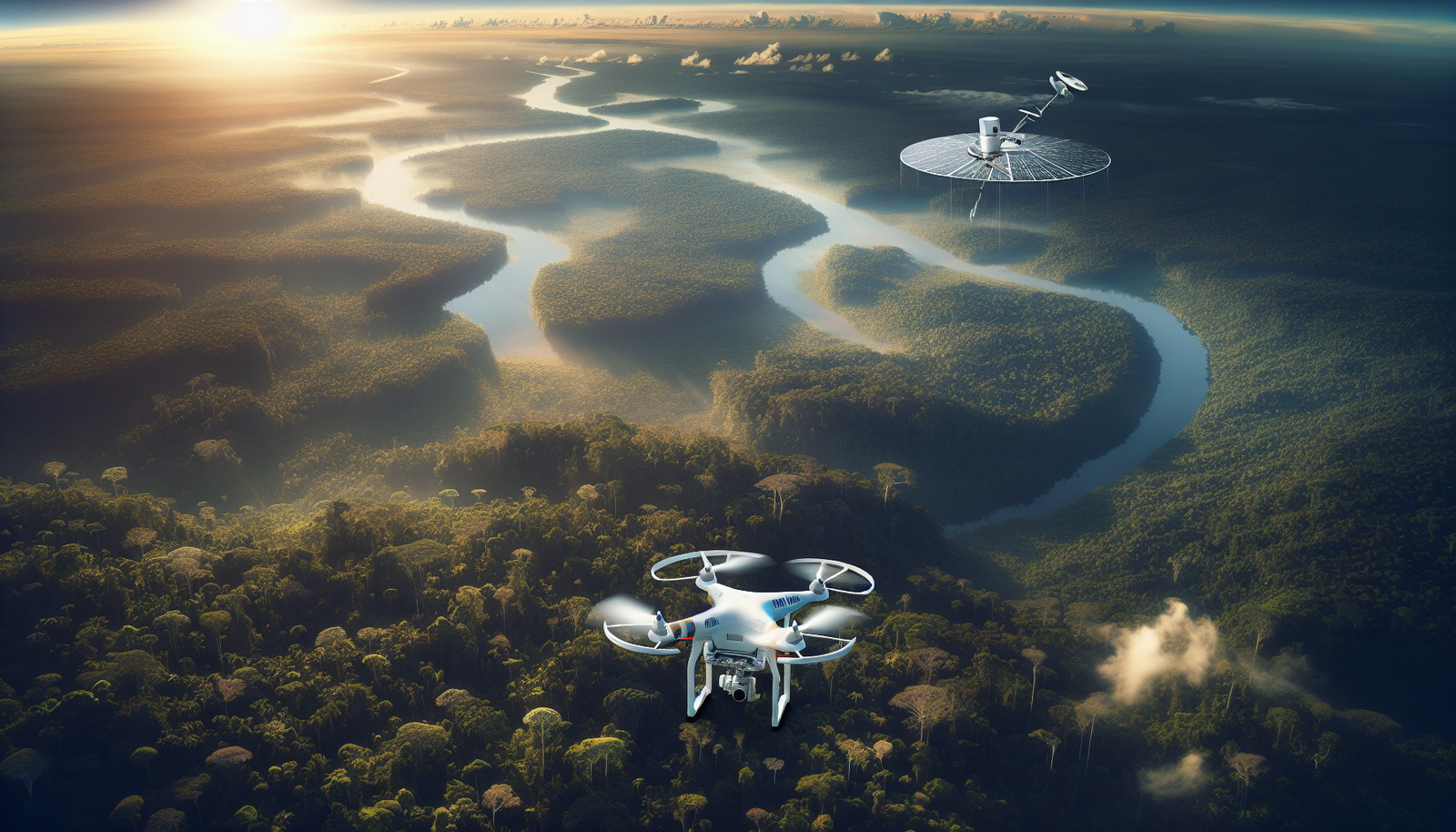Understanding Environmental Sustainability
Environmental sustainability refers to the responsible interaction with the environment to avoid depletion or degradation of natural resources and allow for long-term environmental quality. It emphasizes the importance of preserving ecosystems while meeting the needs of present and future generations. To truly understand environmental sustainability, one must consider the intricate balance between economic, social, and environmental factors. This balance is often depicted through the triple bottom line approach, which prioritizes people, planet, and profit.
One key aspect of environmental sustainability is the conservation of biodiversity. Biodiversity supports ecosystem productivity and resilience, providing essential services such as pollination, nutrient cycling, and climate regulation. To illustrate the importance of biodiversity, consider the following data on species diversity:
| Region | Number of Species | Threatened Species (%) |
|---|---|---|
| Amazon Rainforest | 2,500,000 | 17% |
| Congo Basin | 1,300,000 | 14% |
| Southeast Asia | 500,000 | 25% |
In addition to biodiversity, renewable energy is a cornerstone of environmental sustainability. Renewable energy sources such as solar, wind, and hydropower generate electricity without depleting natural resources or emitting greenhouse gases. Transitioning to renewable energy not only reduces carbon footprints but also promotes energy security and economic growth. The following strategies are crucial for advancing renewable energy:
- Investing in research and development to enhance technology efficiency.
- Implementing policies and incentives to encourage the adoption of clean energy.
- Developing infrastructure to support renewable energy distribution.
By understanding these components of environmental sustainability, individuals and organizations can work towards a more sustainable future. Embracing sustainable practices across various domains will ensure the health and vitality of our planet for generations to come.
The Importance of Biodiversity
Biodiversity is the cornerstone of a healthy and functioning ecosystem. It encompasses the variety of all life forms on Earth, including different plants, animals, and microorganisms, the genetic information they contain, and the ecosystems they form. Biodiversity is essential for ecosystem services, which are the benefits provided by ecosystems to humans, such as clean air and water, pollination of crops, and climate regulation. The loss of biodiversity can disrupt these services and lead to severe consequences for both natural environments and human societies.
One of the key reasons biodiversity is crucial is its role in maintaining ecosystem resilience. Diverse ecosystems are better able to withstand environmental stresses, such as climate change and natural disasters. For instance, a forest with a wide variety of tree species is more likely to survive a pest outbreak than a monoculture forest. Similarly, agricultural systems that incorporate diverse crops can be more productive and sustainable over time. The following list outlines some critical contributions of biodiversity:
- Pollination – Many plants rely on animals like bees, birds, and bats for pollination, which is vital for food production.
- Soil Health – Diverse organisms contribute to nutrient cycling, improving soil fertility and structure.
- Water Purification – Wetlands and diverse plant communities filter pollutants from water.
- Climate Regulation – Forests and oceans sequester carbon dioxide, mitigating climate change.
Efforts to preserve biodiversity are crucial and can include protected areas, sustainable land-use practices, and restoring degraded ecosystems. A table below illustrates some strategies and their impacts:
| Strategy | Impact |
|---|---|
| Establishing Protected Areas | Safeguards habitats and species, allowing ecosystems to thrive. |
| Sustainable Agriculture | Reduces habitat destruction and promotes diverse crop systems. |
| Restoration Projects | Rehabilitates degraded landscapes, enhancing ecosystem services. |
| Legislation and Policy | Enforces biodiversity protection and promotes conservation efforts. |
Renewable Energy Solutions
Renewable energy solutions are at the forefront of the movement towards environmental sustainability. These solutions focus on harnessing natural resources that are replenished on a human timescale, such as sunlight, wind, and water, to produce energy. The transition to renewable energy is crucial for reducing the carbon footprint associated with fossil fuels and mitigating the impacts of climate change. Governments and organizations worldwide are investing in renewable technologies to ensure a sustainable future.
Among the most promising renewable energy technologies are solar and wind power. Solar energy is abundant and can be harnessed using photovoltaic cells or solar thermal systems. The implementation of solar farms and rooftop solar panels has grown exponentially, providing clean energy to millions of households. Wind energy, on the other hand, is captured through wind turbines, which have become a common sight in many countries. Offshore and onshore wind farms have the potential to generate significant amounts of electricity, contributing to national grids and reducing reliance on non-renewable sources.
To illustrate the potential of renewable energy, consider the following data on the global capacity of various renewable sources:
| Energy Source | Global Capacity (GW) |
|---|---|
| Solar Power | 600 |
| Wind Power | 700 |
| Hydropower | 1200 |
| Biomass | 120 |
In addition to solar and wind energy, other forms of renewable energy such as hydropower and biomass also play a significant role in the sustainable energy landscape. Hydropower utilizes the energy of flowing water to generate electricity and is one of the oldest and most established forms of renewable energy. Meanwhile, biomass energy is derived from organic materials and can be used for electricity production, heating, and as transportation fuel. Together, these renewable energy solutions provide a diverse mix that can meet the energy demands of the future while minimizing environmental impact.
Sustainable Agriculture Practices
Sustainable agriculture is a crucial component in the pursuit of environmental sustainability, offering methods to produce food in ways that protect the environment, public health, human communities, and animal welfare. Key practices include crop rotation, agroforestry, and the use of organic fertilizers. These methods help maintain soil fertility, reduce the need for chemical inputs, and enhance biodiversity. Crop rotation, for example, involves alternating the species of crops grown on a particular piece of land, which can improve soil structure and fertility while reducing pest and weed pressure.
One of the most effective sustainable agriculture practices is the integration of agroforestry. This approach combines agriculture and forestry technologies to create more diverse, productive, and sustainable land-use systems. By incorporating trees into agricultural landscapes, agroforestry can enhance biodiversity, protect water resources, and increase carbon sequestration. Furthermore, the use of organic fertilizers derived from plant and animal matter can significantly reduce the reliance on synthetic fertilizers, minimizing the risk of water pollution and promoting healthier soil ecosystems.
Another important aspect of sustainable agriculture is water management. Efficient water use in agriculture can be achieved through techniques such as drip irrigation and rainwater harvesting. These methods help conserve water resources, reduce soil erosion, and improve crop yields. Below is a summary of common sustainable agriculture practices:
- Crop rotation
- Agroforestry
- Use of organic fertilizers
- Drip irrigation
- Rainwater harvesting
Sustainable agriculture not only focuses on environmental benefits but also emphasizes economic viability and social equity. Farmers can achieve higher profitability by reducing input costs and accessing markets that value sustainably produced goods. Additionally, sustainable practices can contribute to the well-being of rural communities by creating jobs and promoting food security. The following table highlights some key advantages of sustainable agriculture:
| Practice | Environmental Benefit | Economic Benefit |
|---|---|---|
| Crop Rotation | Improves soil fertility | Reduces input costs |
| Agroforestry | Enhances biodiversity | Increases market opportunities |
| Organic Fertilizers | Reduces water pollution | Promotes premium pricing |
Water Conservation Techniques
Water conservation is a crucial element in the pursuit of environmental sustainability. Efficient water use not only helps preserve the environment but also ensures that this vital resource is available for future generations. Implementing effective water conservation techniques can significantly reduce water waste and promote sustainable water management practices. Below are some key strategies and methods to conserve water efficiently.
- Rainwater Harvesting: This technique involves collecting and storing rainwater for later use. It is a simple yet effective way to reduce the demand on local water supplies. By installing rain barrels or larger storage systems, households and businesses can use harvested rainwater for irrigation, flushing toilets, and even potable uses after proper treatment.
- Drip Irrigation Systems: Unlike traditional irrigation methods, drip irrigation delivers water directly to the plant roots, minimizing evaporation and runoff. This method can save up to 50% more water compared to conventional watering techniques.
- Greywater Recycling: Greywater refers to wastewater generated from household activities such as laundry, dishwashing, and bathing. By treating and reusing greywater for non-potable purposes like landscape irrigation, we can significantly reduce freshwater consumption.
Adopting water-efficient appliances and fixtures is another effective way to conserve water. For instance, low-flow showerheads and toilets can substantially decrease water usage in homes. The table below illustrates the potential water savings from using such devices:
| Appliance/Fixture | Traditional Usage (liters per use) | Water-Efficient Usage (liters per use) | Water Savings (%) |
|---|---|---|---|
| Showerhead | 15-25 | 6-9 | Up to 60% |
| Toilet | 13-20 | 4-6 | Up to 70% |
In conclusion, by implementing these water conservation techniques, individuals and communities can make a significant impact on their water footprint. These strategies not only contribute to environmental sustainability but also lead to economic benefits by reducing water bills and minimizing the need for costly water infrastructure expansions.
Waste Reduction and Recycling
Waste reduction and recycling are critical components of achieving environmental sustainability. As global waste production continues to rise, it becomes imperative to adopt strategies that minimize waste generation and promote the reuse and recycling of materials. By implementing effective waste management practices, we can significantly reduce the environmental impact of waste, conserve natural resources, and decrease greenhouse gas emissions.
One effective approach to waste reduction is the implementation of the 3Rs principle: Reduce, Reuse, and Recycle. This principle encourages individuals and businesses to reduce their waste by minimizing consumption and opting for products with less packaging. It also promotes the reuse of materials whenever possible, thereby extending the lifecycle of products and reducing the demand for new resources. Finally, recycling materials such as paper, glass, metals, and plastics helps to divert waste from landfills and enables the production of new products without depleting raw materials.
In addition to individual efforts, government policies and corporate initiatives play a crucial role in enhancing waste reduction and recycling efforts. Many countries have implemented regulations to encourage recycling, such as mandatory recycling programs and landfill taxes. Corporations are also increasingly adopting circular economy models, which focus on designing products for longevity, repairability, and recyclability. These models not only help in reducing waste but also offer economic benefits by creating new business opportunities and promoting sustainable growth.
Moreover, technological advancements are revolutionizing waste management processes. Innovations such as automated sorting systems and advanced recycling technologies are making it easier and more efficient to process recyclable materials. These technologies help to improve the quality of recycled materials and increase the overall recycling rates. By leveraging these advancements, communities and industries can work towards a more sustainable and waste-free future.
Green Urban Planning
Green urban planning is a crucial component in the journey towards environmental sustainability. It emphasizes the development of cities that prioritize ecological balance, minimize waste, and reduce carbon footprints. By integrating natural elements into urban environments, cities can enhance the quality of life for their residents while also conserving natural resources. Key strategies include the implementation of green spaces, efficient public transportation systems, and eco-friendly building practices.
Green Spaces and Biodiversity
- Urban Forests: Urban forests play a significant role in improving air quality, reducing heat, and supporting biodiversity. They provide habitat for various species and contribute to the ecological network within cities.
- Parks and Green Roofs: The inclusion of parks and green roofs in urban planning helps reduce urban heat islands, manage stormwater, and offer recreational spaces for residents.
Transportation and Energy
Efficient public transportation systems are essential for reducing urban carbon emissions. Cities can decrease reliance on private vehicles by expanding public transit options and encouraging the use of bicycles and pedestrian pathways.
- Public Transit: Investments in bus and rail systems can significantly lower emissions and congestion.
- Renewable Energy: Incorporating solar panels and wind turbines in urban settings can further reduce the dependency on fossil fuels.
| Element | Benefits |
|---|---|
| Green Spaces | Improves air quality, supports biodiversity, provides recreation |
| Public Transit | Reduces emissions, decreases traffic congestion |
| Renewable Energy | Reduces reliance on fossil fuels, lowers carbon footprint |
By adopting these green urban planning strategies, cities can become more sustainable and resilient to environmental challenges. This holistic approach not only addresses current ecological concerns but also lays the groundwork for a sustainable future.
Corporate Responsibility in Sustainability
Corporate responsibility plays a crucial role in the journey toward environmental sustainability. Companies are increasingly recognizing their impact on the planet and are taking steps to mitigate negative effects. This involves implementing sustainable practices, reducing carbon footprints, and investing in green technologies. Businesses are not only addressing their own environmental impact but also influencing their supply chains to adopt sustainable practices. By doing so, they help create a ripple effect that extends far beyond their direct operations, promoting a culture of sustainability across industries.
One of the key strategies for corporations is to adopt sustainable business models that prioritize long-term ecological balance over short-term profits. This shift involves integrating environmental considerations into decision-making processes at all levels. Companies are setting ambitious targets for reducing emissions, minimizing waste, and conserving resources. A significant number of corporations are committing to achieving net-zero emissions by 2050, aligning with global climate goals. The following table illustrates some leading companies and their sustainability targets:
| Company | Target Year for Net-Zero Emissions | Key Initiatives |
|---|---|---|
| Company A | 2040 | Renewable energy investments, waste reduction programs |
| Company B | 2050 | Sustainable supply chain management, carbon offset projects |
| Company C | 2035 | Green product innovations, energy efficiency improvements |
Moreover, transparency and accountability are becoming essential components of corporate sustainability efforts. Businesses are increasingly reporting on their environmental performance, often through sustainability reports that outline progress and areas for improvement. These reports not only provide valuable insights to stakeholders but also hold companies accountable for their environmental impact. Additionally, many corporations are collaborating with non-governmental organizations (NGOs), governments, and other entities to drive larger sustainability initiatives, showcasing a collective effort to tackle environmental challenges.
In conclusion, corporate responsibility is a pivotal element in achieving environmental sustainability. By adopting sustainable practices and setting ambitious targets, companies can significantly contribute to global efforts to protect the environment. The integration of sustainability into core business strategies not only benefits the planet but also enhances corporate reputation and positions companies as leaders in the transition to a more sustainable future.
Community Involvement and Education
Community involvement plays a crucial role in the journey towards environmental sustainability. Grassroots movements and local initiatives often serve as the backbone for larger environmental efforts, fostering a sense of ownership and responsibility among community members. By participating in local cleanup drives, tree-planting events, and conservation projects, individuals can directly contribute to their environment’s well-being. Furthermore, such activities provide a platform for citizens to voice their concerns and suggestions, thereby promoting a more inclusive approach to sustainability.
Education is equally important in cultivating a culture of sustainability. Schools and universities are integrating environmental education into their curricula, empowering students with the knowledge and skills necessary to tackle environmental challenges. This educational drive is not limited to academic institutions; community workshops and seminars offer valuable insights into sustainable practices, such as waste reduction and energy conservation. By educating individuals about the impact of their actions, communities can collectively make informed decisions that prioritize long-term ecological health.
Successful community involvement and education strategies often include the following components:
- Workshops and Seminars: Hosting regular workshops can equip community members with practical skills for sustainability.
- Collaborative Projects: Encouraging collaboration between local organizations and residents can multiply the impact of sustainability efforts.
- School Programs: Integrating sustainability into school programs can foster early awareness and responsibility among children.
| Strategy | Impact |
|---|---|
| Local Cleanup Drives | Reduces waste and pollution, enhances community aesthetics |
| Tree-Planting Events | Increases green cover, improves air quality |
| Educational Workshops | Raises awareness, encourages sustainable practices |
The Role of Technology in Sustainability
Technology plays a pivotal role in advancing environmental sustainability by offering innovative solutions to pressing ecological challenges. Through the development and implementation of cutting-edge technologies, societies can significantly reduce their environmental footprint while promoting efficient resource use. From renewable energy systems to smart agriculture, technology is the cornerstone of sustainable development.
One of the most remarkable contributions of technology to sustainability is in the field of renewable energy. Innovations in solar, wind, and hydroelectric power have drastically reduced the reliance on fossil fuels, leading to a significant decrease in carbon emissions. The integration of energy storage systems, such as advanced batteries, further enhances the efficiency and reliability of these renewable sources.
| Technology | Impact on Sustainability |
|---|---|
| Solar Panels | Reduce carbon emissions by providing clean energy |
| Smart Grids | Enhance energy distribution and minimize waste |
| Electric Vehicles | Lower greenhouse gas emissions and reduce air pollution |
In the realm of sustainable agriculture, technology has introduced precision farming techniques that optimize the use of resources such as water, fertilizers, and pesticides. By employing tools like GPS and IoT sensors, farmers can monitor and manage their fields with unprecedented accuracy, leading to higher yields and lower environmental impact.
- Improved crop monitoring through remote sensing technologies
- Efficient irrigation systems that conserve water
- Automated machinery that reduces soil compaction and energy consumption
Furthermore, the advancement of data analytics and machine learning has enabled more sophisticated environmental monitoring and management. Predictive models can forecast climate patterns, allowing communities to better prepare for natural disasters and mitigate their effects. These technological strides are crucial for building resilient and adaptive systems that sustain both human and ecological health.
Policy and Legislation for Environmental Protection
Policy and legislation play a crucial role in environmental sustainability by establishing frameworks and standards that guide efforts to protect natural resources. Governments worldwide have implemented various policies aimed at reducing carbon emissions, conserving biodiversity, and promoting sustainable practices. For instance, the introduction of the Paris Agreement marked a significant step in international cooperation on climate change, setting targets for reducing greenhouse gas emissions. National policies, such as the Clean Air Act in the United States, are also instrumental in regulating pollutants and promoting cleaner air.
Effective environmental legislation often involves a combination of regulatory measures and incentives that encourage businesses and individuals to adopt sustainable practices. Regulatory measures may include setting limits on emissions, enforcing penalties for non-compliance, and mandating the use of environmentally friendly technologies. On the other hand, incentives can take the form of tax breaks, subsidies, or grants for companies that invest in renewable energy or sustainable agriculture. A balanced approach that integrates both regulation and incentives is essential for fostering a culture of sustainability.
Another critical aspect of policy and legislation is the protection of biodiversity. Laws such as the Endangered Species Act aim to protect threatened species and their habitats from human activities. Additionally, international conventions like the Convention on Biological Diversity emphasize the need for global cooperation in preserving the planet’s biodiversity. These legislative measures are vital for maintaining ecological balance and ensuring the survival of various species.
To effectively implement these policies, it is necessary to involve multiple stakeholders, including government agencies, non-governmental organizations, and the private sector. Collaboration between these entities can lead to the development of comprehensive strategies that address the complex challenges of environmental sustainability. Below is a summary table highlighting key legislative measures and their objectives:
| Legislation/Policy | Objective |
|---|---|
| Paris Agreement | Reduce global carbon emissions and limit global warming. |
| Clean Air Act | Regulate air pollution and improve air quality. |
| Endangered Species Act | Protect threatened and endangered species and their habitats. |
| Convention on Biological Diversity | Promote the conservation of biodiversity worldwide. |
Measuring Sustainability Progress
Measuring sustainability progress is crucial to understanding the effectiveness of policies and practices aimed at environmental conservation. It involves quantifying the impact of various initiatives and determining whether they contribute to long-term ecological balance. One of the primary methods for tracking sustainability is through the use of Key Performance Indicators (KPIs). These indicators help in assessing aspects such as energy consumption, waste reduction, and carbon footprint. By regularly monitoring these KPIs, organizations and governments can make informed decisions to enhance their sustainability efforts.
Another important aspect of measuring sustainability progress is the implementation of comprehensive Life Cycle Assessments (LCA). LCAs evaluate the environmental impacts associated with all stages of a product’s life, from raw material extraction to disposal. This holistic approach provides a detailed understanding of resource use and emissions, enabling stakeholders to identify areas for improvement. Additionally, utilizing Geographical Information Systems (GIS) can aid in visualizing environmental data, allowing for more effective planning and management of natural resources.
In order to facilitate a structured measurement approach, organizations often rely on sustainability reporting frameworks. The Global Reporting Initiative (GRI) and the Sustainability Accounting Standards Board (SASB) are two widely recognized frameworks that guide businesses in disclosing their environmental impact. These frameworks provide a set of standardized metrics that ensure transparency and comparability across different entities. Through consistent reporting, stakeholders can track progress over time and hold organizations accountable for their environmental commitments.
Below is a table that illustrates some key metrics used to measure sustainability progress:
| Metric | Description |
|---|---|
| Carbon Footprint | Measures the total greenhouse gas emissions caused directly and indirectly by an individual, organization, event, or product. |
| Energy Efficiency | Evaluates the amount of energy used in relation to the output produced, aiming to minimize energy use while maintaining productivity. |
| Water Usage | Tracks the volume of water consumed and aims to implement strategies for reduction and sustainable management. |
| Waste Diversion Rate | Indicates the percentage of waste materials diverted from traditional disposal methods such as landfills, through recycling and composting. |



